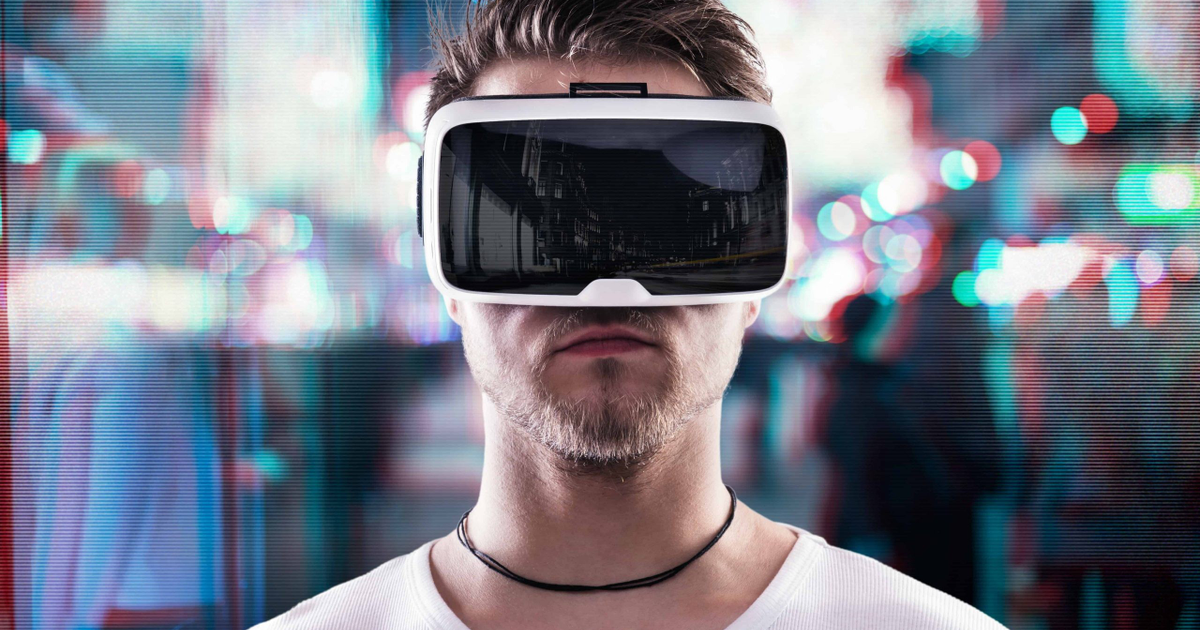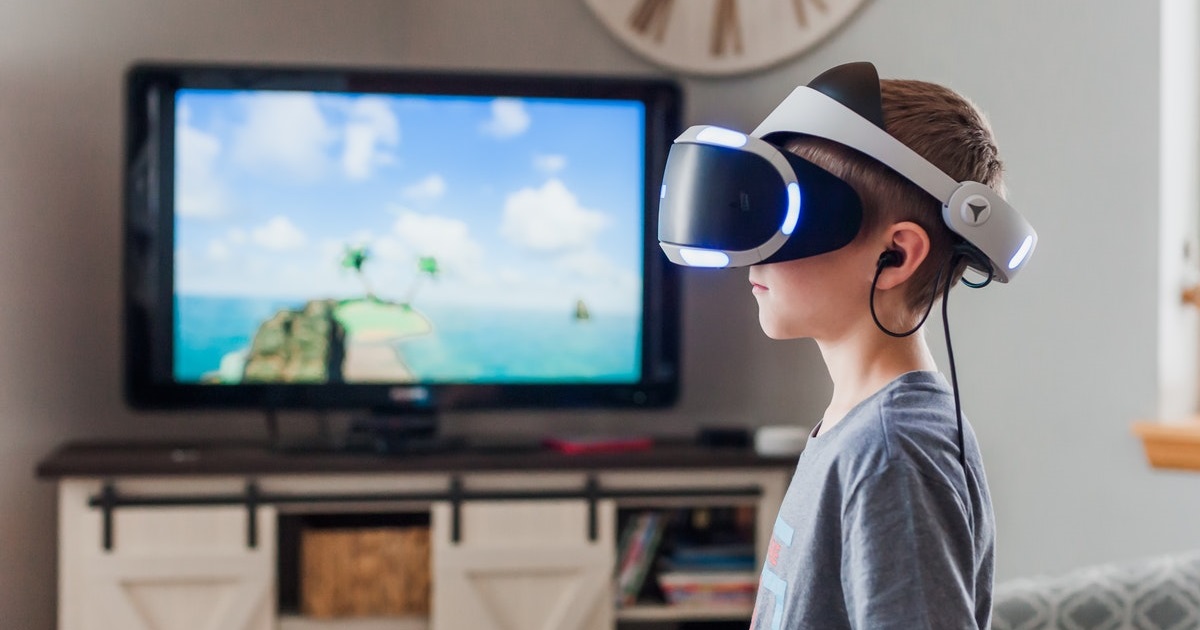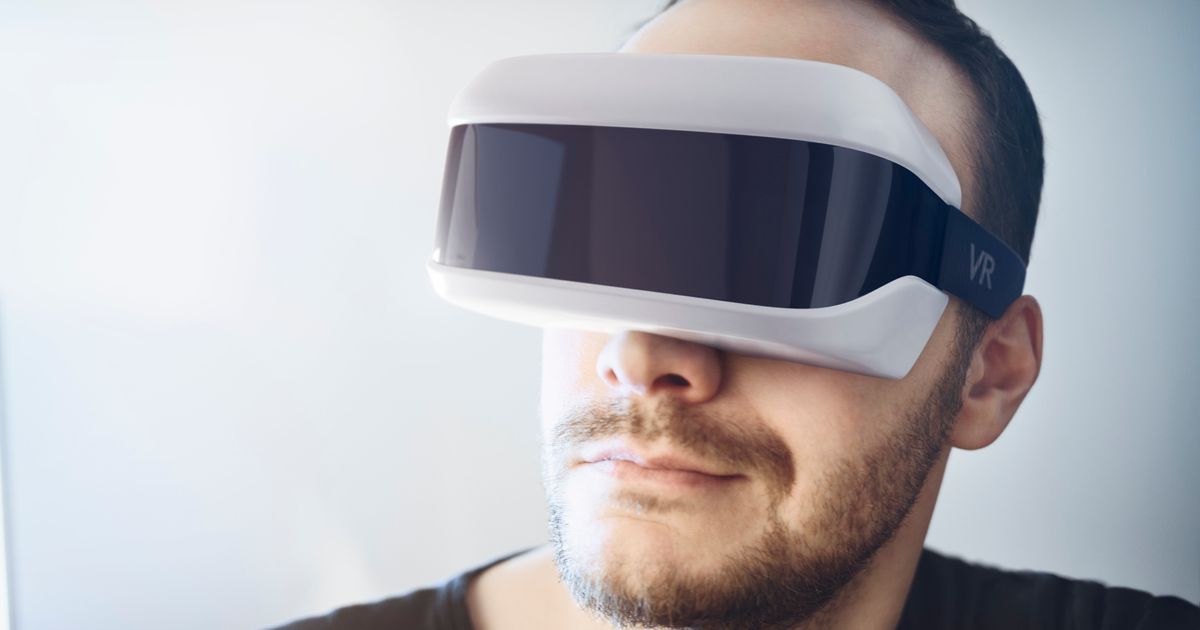The Future of Virtual Reality: Trends and Innovations
Virtual reality, once a futuristic concept, is now a tangible part of our lives, transforming the way we interact with technology and experience the digital realm. As we delve into the future, it’s essential to understand the various trends and innovations that are shaping the world of virtual reality.
Setting the Stage for VR’s Evolution
The journey of VR has been nothing short of remarkable, setting the stage for an exciting future. VR’s evolution can be traced back to its inception, with key milestones that have paved the way for the immersive experiences we enjoy today.
The Rapid Rise of Virtual Reality
Virtual reality has witnessed a meteoric rise, revolutionizing several aspects of our lives. From its humble beginnings to its current ubiquity, VR has come a long way. In the early 20th century, science fiction authors like Stanley G. Weinbaum dreamt of immersive experiences, but it was in the late 20th century that the first seeds of VR were sown. Devices like the Sensorama in the 1960s and the Sword of Damocles in the 1960s laid the groundwork for what we know as VR today.
The 21st century brought VR into the mainstream, with the release of devices like the Oculus Rift and HTC Vive. These headsets offered high-quality immersion, taking users to far-off worlds and providing exciting gaming experiences. The rapid growth of VR was further accelerated by smartphone-based VR, such as Google Cardboard, which brought affordable VR experiences to the masses.
Understanding Virtual Reality

To comprehend the future, we must first understand what virtual reality truly is. It’s not just about wearing a headset; it’s about immersing oneself in a new world.
Defining Virtual Reality
At its core, VR is about creating an artificial environment that immerses users in a digitally crafted world, altering their perception of reality. It’s achieved by using a combination of hardware, such as headsets and controllers, and software, which generates the virtual environment. This environment is designed to mimic reality, providing users with a 360-degree view of a world that may be entirely different from their physical surroundings.
The essence of VR is to trick the brain into believing that the virtual environment is real. This is accomplished through the stereoscopic 3D display, head tracking, and often, haptic feedback. When these elements work together seamlessly, they create a sense of presence, where users feel like they are truly present in the virtual world.
The Immersive Experience
The hallmark of VR is its immersive experience, where users become active participants in a synthetic reality that feels tangible and authentic. The key to immersion lies in the level of detail and interactivity that VR can provide. High-quality graphics, realistic soundscapes, and intuitive interactions contribute to this immersion.
For example, in a VR game, you can physically duck behind cover, aim your virtual gun, and engage with the environment just as you would in the real world. This level of interactivity sets VR apart from other media forms, making it a powerful tool for entertainment, education, and training.
VR vs. AR: What Sets Them Apart?
Virtual Reality (VR) and Augmented Reality (AR) share similarities but diverge in their fundamental principles. It’s crucial to distinguish between the two to grasp the future of VR effectively. While VR immerses users in a completely digital environment, AR overlays digital content onto the real world. In VR, the physical world is replaced by a virtual one, whereas in AR, the physical world remains visible, with digital elements augmenting it.
AR, popularized by applications like Pokémon Go and Snapchat filters, enhances the real world with digital information. In contrast, VR creates a fully immersive experience where the user is entirely transported to a digital environment.
The Evolution of VR Hardware
VR hardware has evolved significantly over the years, driving the innovation within the industry.
Early VR Devices
From the rudimentary headsets of the past to the modern marvels we have today, the evolution of VR hardware is awe-inspiring. Early VR devices, such as the Sensorama and the Sword of Damocles, were clunky and expensive. These pioneers paved the way for future innovations, demonstrating the potential of immersive experiences.
However, it wasn’t until the 21st century that VR hardware began to truly mature. The release of devices like the Oculus Rift in 2016 and the HTC Vive in the same year marked a significant turning point. These headsets offered high-resolution displays, precise motion tracking, and ergonomic designs, making them comfortable for extended use. As a result, VR became more accessible and appealing to a broader audience.
Modern VR Headsets
The latest VR headsets combine cutting-edge technology and sleek design, offering a more comfortable and immersive experience. Devices like the Oculus Quest 2 and the PlayStation VR have further democratized VR, making it accessible to a wide range of users.
These headsets incorporate features like inside-out tracking, which eliminates the need for external sensors, and wireless capabilities, allowing users to move freely within their virtual environment. The integration of eye-tracking technology enhances realism by enabling foveated rendering, which focuses rendering resources where the user is looking, improving performance and reducing hardware requirements.
The Quest for Better Resolution
One of the key challenges in VR is improving screen resolution and reducing the screen door effect. Innovations in display technology are pushing the boundaries of clarity. High-resolution displays, such as 4K and beyond, are becoming standard, resulting in sharper and more lifelike visuals.
The screen door effect, characterized by the visible grid of lines that separate pixels, is gradually fading into obscurity as pixel densities increase. This development is critical for achieving a more realistic and immersive VR experience.
Wireless Freedom in VR
The shift towards wireless VR not only enhances convenience but also paves the way for new possibilities in virtual exploration. Wireless VR headsets like the Oculus Quest series allow users to move freely without the constraints of cables.
This untethered experience offers new dimensions of freedom, enabling users to interact with their virtual surroundings without worrying about tripping over wires or being limited by the physical space. As technology continues to improve, the wireless capabilities of VR headsets will only become more robust and widespread.
The Software Ecosystem

In the virtual realm, hardware is only part of the equation; the software ecosystem plays a pivotal role in shaping the VR landscape.
VR Content: Games and Beyond
While games have been a driving force for VR, we’re witnessing an expansion into diverse content, from educational experiences to therapeutic applications. The library of VR content has grown exponentially, catering to a broad spectrum of interests and needs.
In the early days of VR, gaming was the primary driver of content creation. Titles like “Superhot VR,” “Beat Saber,” and “Half-Life: Alyx” became instant classics, showcasing the potential of immersive gaming experiences.
However, VR has since transcended gaming. Educational institutions have adopted VR to offer students hands-on experiences that were previously unattainable. Medical professionals use VR for surgical training and patient therapy. Architects and engineers use it for design and visualization, while artists explore the medium to create interactive and immersive installations.
The Role of Augmented Reality in VR
Augmented reality seamlessly blends the real and virtual worlds, presenting exciting opportunities for innovative applications within the VR space. Augmented reality (AR) and VR often intersect, with AR enhancing the real world and VR immersing users in a digital one.
In VR, the entire environment is generated digitally, making it possible to visit fantastical worlds or recreate historical settings. AR, on the other hand, supplements the physical world with digital information. For example, using AR glasses, you could overlay directions onto the street you’re walking on, or display information about landmarks as you explore a city.
These technologies aren’t mutually exclusive; they can coexist in mixed reality experiences. The convergence of AR and VR is an exciting trend to watch, as it opens up new possibilities for interactive and immersive experiences.
The Promise of Metaverse
The concept of a metaverse, an interconnected virtual universe, is captivating the imaginations of tech enthusiasts and visionaries. The metaverse is an expansive, shared digital space that encompasses multiple virtual worlds, each with its unique rules, experiences, and communities.
Imagine a digital realm where people can socialize, work, play, and create, all within a vast interconnected network of virtual spaces. It’s a vision of the internet where the boundaries between real life and the digital world blur, offering limitless possibilities for interaction and collaboration.
While the idea of the metaverse is still in its infancy, tech giants like Facebook (now Meta) and companies in the gaming industry are investing heavily in making it a reality. As the metaverse evolves, it could become a central hub for social interactions, entertainment, commerce, and much more.
Creating VR Content: Tools and Platforms
Developers now have an array of tools and platforms at their disposal to craft captivating VR experiences, making content creation more accessible. Creating VR content involves a unique set of challenges and opportunities. Fortunately, developers have access to a wealth of resources to bring their VR visions to life.
Unity and Unreal Engine are two of the most popular game engines used in VR content creation. These engines provide a robust set of tools for designing and developing immersive experiences. They offer support for various VR headsets and simplify the integration of complex interactions, physics, and graphics.
In addition to game engines, there are specialized tools for 360-degree video production, 3D modeling, and animation. Adobe’s suite of products, including Adobe Premiere and After Effects, has features tailored to VR content creators.
Distribution platforms like SteamVR, Oculus Store, and PlayStation VR have made it easier for developers to reach their target audience. These platforms provide a marketplace for VR content and facilitate user engagement and reviews.
Applications of Virtual Reality
VR’s potential goes far beyond gaming and entertainment, impacting various domains.
Gaming and Entertainment
The gaming industry has been the early adopter of VR, transforming how we play and interact in virtual worlds. Virtual reality gaming is not just about entertainment; it’s about transporting players to new realms and challenging them in ways that were previously impossible.
VR games can vary from action-packed adventures and horror experiences to educational and artistic endeavors. “Beat Saber” combines rhythm and movement in a visually stunning way, while “Moss” offers an endearing tale where players interact with a small mouse named Quill. The diversity of VR games continues to expand, offering something for every taste.
VR in Education
From virtual classrooms to historical reenactments, VR is redefining education, making learning more engaging and interactive. In the classroom, VR has the power to turn static textbooks into immersive experiences. Students can take virtual field trips to explore historical landmarks, swim with marine life in the Great Barrier Reef, or step inside the human body to learn about anatomy.
In medical education, VR has proven invaluable. Surgeons can practice complex procedures in a risk-free environment, refining their skills before they enter the operating room. Medical students can explore detailed 3D models of the human body to understand anatomy and pathology better.
Additionally, VR is being used to train astronauts, air traffic controllers, and military personnel, providing a safe and controlled environment for skill development.
VR for Healthcare
In the medical field, VR is being employed for pain management, therapy, and surgical simulations, enhancing patient care and training. Virtual reality can serve as a powerful tool in healthcare, contributing to both the well-being of patients and the professional development of healthcare providers.
One notable application of VR in healthcare is the management of chronic pain. VR therapy distracts patients from their discomfort by immersing them in captivating experiences, reducing the need for traditional pain medications. It’s particularly effective in the treatment of burn victims, where patients use VR to endure the discomfort of wound cleaning and dressing changes.
Another remarkable use of VR is in the treatment of post-traumatic stress disorder (PTSD) and anxiety disorders. Exposure therapy in VR allows individuals to confront and process traumatic events in a controlled and safe environment, offering a breakthrough in mental health treatment.
When it comes to training medical professionals, VR simulations provide a risk-free way to practice surgical procedures, refine surgical techniques, and learn to work effectively as a team. VR allows surgeons to rehearse surgeries, explore anatomical variations, and experience complex cases, ultimately improving patient safety.
Virtual Tourism: Exploring the World from Home
With VR, you can embark on virtual journeys to distant lands, all from the comfort of your living room. Virtual tourism offers an exciting way to explore the world without leaving your home, making travel accessible to those who may have physical limitations or budget constraints.
Through 360-degree videos and virtual reality experiences, you can visit renowned landmarks, famous cities, and natural wonders. Whether you want to walk through the Louvre Museum in Paris, snorkel along the Great Barrier Reef, or trek through the Amazon rainforest, virtual tourism brings the world to your doorstep.
Moreover, VR can recreate historical settings, allowing you to step back in time and witness significant events. Imagine being present during the signing of the Declaration of Independence or walking the streets of ancient Rome. Virtual tourism isn’t just about seeing new places; it’s about time travel and cultural immersion.
Challenges and Ethical Considerations

As we embrace VR, we must also address the challenges and ethical concerns that come with it. While virtual reality has made significant strides, it’s not without its drawbacks and responsibilities.
Motion Sickness and Discomfort
VR-induced motion sickness is a hurdle that developers are actively working to overcome, as user comfort is paramount. Motion sickness occurs when there’s a disconnect between what you see in the virtual world and what your inner ear perceives. It can result in nausea, disorientation, and discomfort.
To combat motion sickness, VR developers employ various techniques, including reducing latency, optimizing frame rates, and refining motion control schemes. As VR technology continues to advance, motion sickness is becoming less common, making virtual reality a more accessible and comfortable experience for users.
Privacy Concerns in the VR World
The immersion of VR can blur the lines between reality and the digital realm, raising questions about user privacy and data security. When you don a VR headset, you may be sharing personal data with the companies that manufacture and operate the hardware and software.
Privacy concerns in VR are multifaceted. First, the sensors and cameras on VR headsets collect information about your physical movements and surroundings. While this data is used to track your position and create interactive experiences, it raises concerns about the storage and potential misuse of this information.
Moreover, the social aspects of VR introduce new privacy challenges. In social VR platforms, you interact with others using avatars, and the potential for harassment and abuse exists. Developers are implementing safeguards to protect users and report abusive behavior, but it’s an ongoing challenge.
Addiction and Overuse
With the allure of virtual worlds, concerns about addiction and overuse of VR are surfacing, calling for responsible usage. While VR can offer incredible experiences, it’s essential for users to maintain a healthy balance between the virtual and real worlds.
Addiction to VR, also known as “VR addiction,” is characterized by compulsive and excessive use of VR technology to the detriment of one’s real-life responsibilities and well-being. Some users may find it challenging to disconnect from the immersive experiences VR offers, leading to negative impacts on their social life, work, and physical health.
To address VR addiction, developers and organizations have begun implementing usage time limits and reminders within VR platforms. It’s crucial for users to be aware of their VR usage patterns and maintain a balanced lifestyle. Additionally, fostering open discussions about responsible VR usage can help mitigate the risks of addiction.
The Impact of VR on Society
The widespread adoption of VR has social and cultural implications, impacting how we interact, work, and perceive reality. VR is reshaping society in multiple ways.
Emerging Trends in Virtual Reality
VR is continually evolving, and emerging trends are shaping the landscape. Understanding these trends is crucial to foresee how VR will continue to impact our lives.
Social VR: Connecting People Globally
Social VR platforms are fostering connections and interactions on a global scale, transcending geographical boundaries. Social VR enables people to come together in shared digital spaces, no matter where they are in the world. These platforms offer unique opportunities for socializing, collaborating, and even attending virtual events.
AltspaceVR, VRChat, and Facebook Horizon are some examples of social VR platforms that allow users to meet, chat, and engage with others in immersive environments. Whether it’s hosting virtual parties, attending concerts, or collaborating on projects, social VR is bringing people closer together in new and exciting ways.
VR in the Workplace
VR is transforming how we work, facilitating remote collaboration and training through immersive experiences. In a world that’s becoming increasingly decentralized, VR is redefining the workplace by enabling employees to work together in virtual environments, regardless of their physical locations.
Collaboration tools in VR can replicate a physical office, complete with virtual meeting rooms and whiteboards. Teams can gather to discuss projects, hold brainstorming sessions, or conduct training, all in a virtual space. This not only saves time and resources but also provides a sense of presence, fostering stronger connections among team members.
In addition to team collaboration, VR is becoming an invaluable tool for employee training. New employees can participate in realistic training scenarios without risk, while experienced professionals can refine their skills through hands-on practice.
VR in Training and Simulation
From military simulations to professional training, VR provides a safe and controlled environment for skill development. VR is revolutionizing training and simulation across various industries. It offers a cost-effective and realistic alternative to traditional training methods.
For military and defense applications, VR simulations provide soldiers with realistic scenarios, preparing them for a wide range of combat situations. These simulations are not only safer but also more accessible than live exercises. Pilots, for example, can practice flying complex missions without leaving the ground.
VR is also playing a crucial role in healthcare training. Medical students and professionals can hone their skills through virtual surgeries and patient simulations. These virtual experiences allow them to make mistakes and learn without jeopardizing real patients’ well-being.
Haptic Feedback and Sensory Enhancements
Advancements in haptic feedback and sensory technologies are making VR experiences even more lifelike. Haptic feedback technology uses vibrations and tactile sensations to simulate touch and physical interactions within the virtual world.
Innovations in haptic gloves and suits allow users to feel the texture of objects they touch, sense resistance when interacting with virtual environments, and even experience the sensation of rain or wind. This technology is crucial for creating a deeper level of immersion, enhancing the sense of presence in virtual experiences.
Additionally, VR is moving beyond visual and auditory stimulation. It’s now exploring olfaction, taste, and temperature. Devices like the FeelReal mask can simulate scents, adding another layer of realism to VR. This trend has potential applications in gaming, training, and even therapy.
Innovations Shaping the Future

The future of VR holds remarkable innovations that will redefine the medium.
Next-Gen VR: What to Expect
The next generation of VR promises higher fidelity, realism, and innovative features. As technology continues to advance, VR hardware is poised to become even more powerful and accessible. Some of the key developments we can expect include:
Lighter and more comfortable headsets: VR hardware is becoming sleeker and more comfortable, reducing the physical burden on users.
Improved resolution and field of view: Display technology is advancing, offering higher resolutions and wider fields of view for more realistic visuals.
Eye-tracking and foveated rendering: Eye-tracking technology will enable more efficient rendering, focusing resources on where the user is looking, improving performance, and reducing hardware requirements.
Wireless capabilities: Wireless VR will become more reliable and widespread, offering greater freedom of movement for users.
Advanced haptic feedback: Haptic feedback devices will provide more realistic tactile sensations, enhancing immersion.
Brain-Computer Interfaces in VR
Blurring the lines between mind and machine, brain-computer interfaces are set to take VR to new dimensions. Brain-computer interfaces (BCIs) offer the potential to control VR experiences directly with the power of the mind.
BCIs detect brain activity, interpret it, and use it to control virtual environments or devices. Imagine simply thinking about moving in a VR world, and your avatar responds accordingly. This technology has the potential to make VR more accessible to those with physical disabilities and create entirely new paradigms for interaction.
While BCIs are still in the experimental stage, companies and researchers are actively exploring their applications in VR and other fields. As BCIs continue to advance, they will unlock new possibilities for interaction and immersion in virtual environments.
The Convergence of VR and AI
Artificial intelligence is enhancing VR experiences, making virtual environments more adaptive and interactive. The integration of AI into VR is taking immersion to the next level. AI-driven NPCs (non-playable characters) can interact with users more convincingly, responding to natural language and gestures.
Moreover, AI is used to create more dynamic and responsive virtual worlds. Virtual environments can adapt to user behavior, offering personalized experiences. AI algorithms can also help enhance the realism of virtual worlds by generating dynamic content and realistic simulations.
The Future of Input Devices: Beyond Controllers
Innovations in input devices are diversifying, introducing novel ways to interact with the virtual world. Traditional controllers and hand tracking are just the beginning. Future input devices will offer a more intuitive and immersive way to interact with virtual environments.
Some of the emerging input methods include:
Gesture recognition: Using cameras and sensors to interpret hand and body movements, enabling natural interaction with the virtual world.
Voice commands: Voice recognition technology allows users to communicate with virtual environments and AI-driven NPCs through speech.
Eye tracking: Eye-tracking technology enables users to interact with objects and navigate interfaces by looking at them.
Brainwave control: Brain-computer interfaces can directly interpret brain activity to control actions and interactions in VR.
These innovations in input devices are making VR more accessible and enjoyable for a broader audience. They reduce the learning curve and create more immersive experiences, which are crucial for the future of VR.
Market Outlook and Investment Opportunities
As VR grows, so do the investment opportunities and market predictions. The VR market is expanding, offering numerous opportunities for investors and entrepreneurs.
VR Market Growth Projections
Analysts predict substantial growth in the VR market, presenting a promising investment landscape. The global VR market is expected to experience significant expansion in the coming years. Factors such as technological advancements, increasing adoption in various industries, and a growing consumer base are driving this growth.
Market projections estimate that the VR market could reach a value of billions of dollars in the next few years. This growth is driven by various sectors, including gaming, healthcare, education, and training.
Key Players in the VR Industry
Identifying key players and industry leaders is essential for investors looking to capitalize on the VR boom. The VR industry is highly dynamic, with several companies leading the way in hardware, software, and content creation.
Key players in the VR industry include Oculus (Meta), Sony, HTC, and Valve, among others. These companies have contributed significantly to the development of VR technology and content. Additionally, tech giants like Facebook (now Meta) are heavily investing in the development of the metaverse, further expanding their influence in the VR space.
Startups and smaller companies are also driving innovation and are worth watching for potential investment opportunities. As the VR ecosystem continues to evolve, new entrants may introduce groundbreaking technologies and content.
Investing in Virtual Reality: Where to Look
Exploring investment opportunities in VR, from startups to established companies, requires careful consideration. If you’re considering investing in the VR space, here are some key areas to explore:
Hardware manufacturers: Companies that produce VR headsets and accessories are at the forefront of the industry. Look for opportunities with manufacturers that are innovating in terms of technology, design, and user experience.
Content creation and development: Content is king in the VR world. Investing in companies or studios that create compelling VR content, whether for gaming, education, or other applications, can be a lucrative endeavor.
Platform and software development: VR platforms and software are essential for delivering and enhancing the user experience. Consider investments in companies that develop VR platforms, software tools, and distribution platforms.
Haptic technology and sensory enhancements: The companies driving innovations in haptic feedback, scent technology, and other sensory enhancements have the potential to shape the future of VR experiences.
Metaverse-related investments: The metaverse is a growing and evolving concept within the VR industry. Companies investing in metaverse development, social VR, and the creation of virtual spaces are positioning themselves for significant growth.
Regulations and Legal Framework
As VR matures, regulations and ethical guidelines become paramount. The immersive nature of VR raises important legal and ethical questions.
VR and Intellectual Property
Protecting intellectual property within VR environments raises questions about copyright and ownership. VR content, including virtual environments, 3D models, and interactive experiences, can be subject to intellectual property rights.
Developers and creators need to navigate the complex landscape of copyright, trademarks, and patents when creating VR content. They must also consider the licensing and distribution of their work within virtual environments and platforms.
Virtual worlds, including those in the metaverse, may require specific regulations and agreements to address intellectual property issues. As the metaverse develops, it’s essential to establish clear legal frameworks to protect both creators and users.
Safety Regulations in VR
Ensuring the safety of VR users is a priority, and regulations are emerging to address potential risks. Safety regulations in VR encompass aspects such as hardware safety, user guidelines, and content ratings.
VR headset manufacturers must adhere to safety standards to prevent potential health risks, such as eye strain or motion sickness. Additionally, clear guidelines for safe VR usage, including breaks and posture recommendations, are essential to prevent discomfort and health issues.
Content ratings and age restrictions are also crucial, especially in VR gaming and social environments. As VR experiences become more realistic and immersive, it’s essential to protect younger users from potentially harmful content.
Ethical Guidelines for VR Developers
Developers need to adhere to ethical guidelines when crafting VR experiences to ensure responsible usage. Ethical considerations in VR development encompass several key areas, including:
Privacy and data protection: VR developers must respect user privacy and adhere to data protection regulations. Clear data usage policies and transparency are vital.
User safety: Developers should design VR experiences with user safety in mind, mitigating potential risks such as motion sickness and virtual harassment.
Content moderation: VR platforms and social spaces need robust content moderation to prevent harassment and inappropriate behavior. Developers should implement reporting systems and respond to user concerns promptly.
Accessibility: VR content and experiences should be accessible to all users, including those with disabilities. Designing for accessibility is an ethical imperative.
Inclusivity and diversity: VR experiences should reflect a diverse and inclusive world. Developers should avoid perpetuating stereotypes and biases.
As VR technology continues to advance, the development of ethical guidelines becomes increasingly important to ensure that the medium is used responsibly and positively.
The Impact on Society and Culture

The influence of VR extends into society and culture, with transformative effects. The impact of VR on society and culture is multifaceted and far-reaching.
Virtual Reality and Art
Artists are embracing VR as a new canvas, creating immersive and interactive art experiences. Virtual reality offers artists a fresh and exciting medium for creative expression. VR art goes beyond traditional paintings and sculptures; it immerses the viewer in a multisensory experience.
VR art installations can transport viewers to otherworldly realms, challenge their perceptions, and invoke powerful emotions. Artists are exploring the possibilities of interactivity, enabling participants to become active participants in the art itself.
Museums and galleries are also incorporating VR to enhance their exhibitions. VR allows visitors to step into historical moments, explore ancient civilizations, or dive into the depths of famous paintings.
The fusion of technology and art in VR is contributing to a renaissance in creative expression, redefining how we experience and appreciate art.
VR’s Role in Social Interactions
The way we socialize is evolving with VR, offering new avenues for global interactions and connections. Social VR platforms provide a new dimension of human interaction. They enable people to gather, communicate, and collaborate in virtual spaces, bridging geographical gaps and offering unique ways to connect.
Social VR platforms facilitate real-time communication through avatars, voice chat, and even hand gestures. People can meet up in virtual worlds to play games, watch movies, or simply hang out. This technology has become especially important in a world where physical distancing is sometimes necessary.
Moreover, VR has the potential to reduce the barriers to communication and interaction for people with disabilities. It can provide new opportunities for those who may face challenges in traditional face-to-face interactions.
Cultural Implications of a VR-Driven World
As VR reshapes how we interact and experience the world, it also has profound cultural implications. The way we perceive reality and experience cultural events is evolving.
Cultural institutions, including museums, theaters, and historical sites, are integrating VR to provide immersive and educational experiences. VR allows people to explore cultural heritage and history in ways that were previously impossible. Museums can offer virtual tours of their exhibits, taking visitors on a journey through time and space.
Additionally, VR can enable people to participate in cultural events and festivals regardless of their physical location. From attending live concerts to experiencing cultural celebrations, VR is opening new doors for cultural exchange and understanding.
Conclusion
Envisioning the VR-driven future is a thrilling endeavor. Virtual reality is poised to continue its rapid evolution, impacting various aspects of our lives, from entertainment and education to healthcare and beyond. The endless possibilities of virtual reality are both exciting and challenging, requiring us to navigate its ethical considerations and regulations carefully.
As technology continues to advance, the convergence of virtual reality, artificial intelligence, and haptic feedback promises to create even more immersive and lifelike experiences. The metaverse, with its interconnected digital spaces, holds the potential to revolutionize how we work, socialize, and explore.
Investors and entrepreneurs have a burgeoning landscape of opportunities in the VR industry, whether in hardware, software, content creation, or sensory technologies. Staying informed about market trends and key players is crucial for those looking to make an impact in the virtual reality space.
While VR offers endless possibilities for innovation and creativity, it’s essential to navigate the ethical considerations surrounding privacy, user safety, and accessibility. Responsible development and usage of VR are paramount to ensure a positive and inclusive future.
As virtual reality continues to transform the way we experience the world, it’s up to us to embrace the potential of this technology while being mindful of its impact on society and culture. The future of virtual reality is bright, offering boundless opportunities for innovation and human connection. It’s a future where the lines between the real and virtual worlds continue to blur, promising new horizons of exploration and interaction.
FAQ
What is virtual reality, and how does it differ from augmented reality?
Virtual reality (VR) is a technology that immerses users in a completely digital environment, often through the use of a headset and motion-tracking equipment. Augmented reality (AR) overlays digital information onto the real world, enhancing the user’s perception of reality. While both technologies alter our perception, VR creates a fully digital experience, while AR enhances our perception of the real world with digital elements.
What are the key differences between early VR devices and modern VR headsets?
Early VR devices were often clunky and had limited capabilities, while modern VR headsets are sleek, more comfortable, and offer improved resolution and performance. Modern headsets also provide better motion tracking, reducing the likelihood of motion sickness, and are often wireless for greater freedom of movement.
What is the metaverse, and how is it related to virtual reality?
The metaverse is a concept of an interconnected digital universe where people can socialize, work, play, and create in various virtual worlds. It’s closely related to virtual reality as it involves immersive digital experiences, and tech companies are investing heavily in making the metaverse a reality by using VR and other technologies.
How is virtual reality being used in education and healthcare?
In education, VR is transforming learning by creating immersive, interactive experiences that help students better understand complex subjects. In healthcare, VR is being used for pain management, therapy, and surgical simulations, improving patient care and professional development for healthcare providers.
What are some of the challenges and ethical considerations associated with virtual reality?
Challenges include motion sickness, privacy concerns, addiction, and overuse. Ethical considerations involve issues like privacy, user safety, content moderation, accessibility, and inclusivity in VR development.
What emerging trends are shaping the future of virtual reality?
Emerging trends include social VR platforms that connect people globally, the use of VR in the workplace for remote collaboration and training, advancements in haptic feedback and sensory enhancements, and the convergence of VR with AI for more interactive experiences.
What innovations can we expect in the next generation of VR technology?
The next generation of VR will likely include lighter and more comfortable headsets, improved resolution, eye-tracking technology, wireless capabilities, and advanced haptic feedback, making VR experiences even more realistic and accessible.
How is AI being integrated into virtual reality, and what are the implications of this integration?
AI is enhancing VR experiences by creating more dynamic and responsive virtual worlds. This integration has the potential to make VR more interactive and immersive, offering personalized experiences and realistic AI-driven NPCs.
What are some key investment opportunities in the virtual reality market, and where should potential investors focus their attention?
Investors can explore opportunities in hardware manufacturers, content creation and development, platform and software development, haptic technology, and sensory enhancements. The metaverse-related investments are also worth considering due to the growing interest in interconnected virtual spaces.
How is virtual reality impacting art and social interactions, and what cultural implications does it have?
Virtual reality is changing how artists create and exhibit art, offering immersive and interactive experiences. Social VR platforms are facilitating global connections and reducing barriers to interaction, especially in a world where physical distancing is sometimes necessary. These changes have profound cultural implications in how we perceive and experience art and connect with others.
In our previous post about the “Exploring Immersive Experiences: The Best Virtual Reality Games,” we delved into the exciting world of VR technology, its applications in various sectors, and the challenges it poses.
For a broader perspective on the evolution of virtual reality and the trends influencing its growth, head over to Medium. This insightful article provides a deep dive into VR hardware advancements, the impact of AI on VR experiences, and how the metaverse is shaping the digital world. It’s a must-read for anyone interested in the future of virtual reality and its implications for technology, society, and culture.




Uma resposta